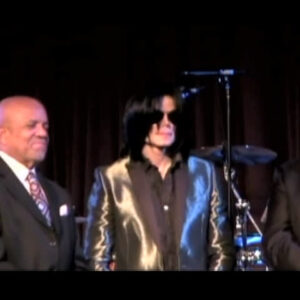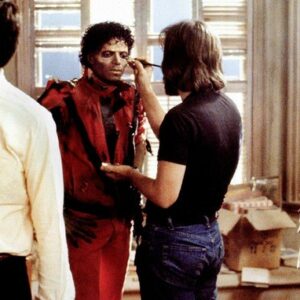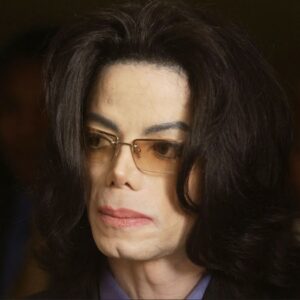In the world of music and entertainment, few artists have left as indelible a mark as Tina Turner. Her powerhouse voice, electrifying performances, and bold, unapologetic style captivated audiences for decades. Yet, among the many memorable aspects of her larger-than-life persona, one symbol stands out as a testament to her strength, resilience, and individuality—her lion-like hair. With its volume, wildness, and fearless attitude, Turner’s hair became more than a mere fashion statement; it was a visual declaration of empowerment and rebellion. From the early days of her career to her later years as an icon, Tina Turner’s mane became an inseparable part of her identity, shaping not just her look but also her legacy.
The Origin of Tina Turner’s “Lion Hair”
Tina Turner’s hair evolution began during a transformative period in her life and career. In the 1960s, when she first rose to fame as part of the Ike & Tina Turner Revue, her look was still relatively conventional—slicked back and styled with the precision typical of the era. However, as her career gained momentum and she began to assert her independence, so did her personal style. By the time the 1980s rolled around, Turner was fully embracing a bold, voluminous hairstyle that would become her signature.
The cultural backdrop of the 1980s played a significant role in the emergence of her “lion hair.” It was an era dominated by big hair, shoulder pads, and over-the-top fashion statements that celebrated excess and flamboyance. For many, this period was a time of self-expression through fashion, and Tina Turner’s hairstyle fit perfectly into the zeitgeist of the time. But more than just aligning herself with trends, Turner was actively shaping them. She wasn’t following the crowd; she was leading it. Her towering, untamed mane of curls became emblematic of a woman who refused to be restrained by society’s expectations.
Symbol of Empowerment and Resilience
Perhaps most notably, Tina Turner’s “lion hair” came to symbolize her personal journey of empowerment and resilience. After surviving years of physical and emotional abuse from her former husband and musical partner, Ike Turner, Tina made the brave decision to leave the marriage in 1976—a move that marked the beginning of her transformation, both personally and professionally.
Turner’s escape from the abusive relationship was not just a turning point in her life but also in her career. She reinvented herself, taking control of her destiny and building an image that reflected her newfound independence. Her hairstyle, wild and untamed, became an outward expression of this inner strength. In a world that often expected women to conform to demure and controlled standards of beauty, Turner’s hair defied the norm. It was a symbol of her refusal to be silenced or tamed, representing both her freedom from her past and her empowerment as a woman who had reclaimed her life on her terms.
For many women, Turner’s hair became a powerful symbol of feminist strength and resilience. It wasn’t just a look; it was a statement. Turner was no longer the controlled and coiffed performer under Ike’s thumb—she was a lioness, wild and free, embodying a spirit of defiance and triumph that resonated with fans around the world. Her hairstyle became an iconic representation of her journey from victim to victor, and for countless women, it was a reminder that they, too, could overcome adversity and reclaim their power.
Influence on Popular Culture
Turner’s lion-like mane quickly became one of the most recognizable elements of her persona, cementing her status as a pop icon. Her hairstyle was emulated by fans and inspired countless artists and stylists, not only within the music industry but across fashion and popular culture. At a time when individuality and self-expression were at the forefront of the cultural conversation, Turner’s hair was a beacon of originality. It encouraged others to embrace bold, non-traditional styles and take risks with their appearance.
In many ways, Turner’s hairstyle transcended mere aesthetics—it became a cultural phenomenon. Fashion magazines featured her look, and stylists sought to recreate the wild, voluminous curls for their clients. Other music icons of the time, including Madonna, Whitney Houston, and Cyndi Lauper, embraced similar bold hairstyles, further pushing the envelope of how women could present themselves onstage and in public. However, none could quite match the originality and raw power that Tina’s hair exuded.
Even decades later, her hairstyle remains an enduring symbol of her legacy. It continues to influence modern artists and musicians, who pay homage to Tina Turner through their own bold looks and powerful performances. From Lady Gaga to Beyoncé, Turner’s influence can be seen in the fearless and extravagant personas that these artists adopt, reinforcing the idea that style can be a powerful tool for self-expression and empowerment.
How Hair Reinforced Her Persona Onstage
Tina Turner’s hair did more than define her look; it reinforced her magnetic stage presence and larger-than-life persona. Known for her high-energy performances and electrifying presence, Turner used every element of her appearance to enhance her onstage power, and her hair played a crucial role in this.
The sheer volume and wildness of her mane created a visual spectacle that matched the intensity of her music and performance style. As she danced and moved across the stage, her hair seemed to take on a life of its own, amplifying her energy and reinforcing the idea that she was an unstoppable force. Turner’s hair became an extension of her physicality—a symbol of her raw, untamed talent and larger-than-life persona.
In many ways, her hair acted as a visual signature, making her instantly recognizable to audiences around the world. Whether she was performing in a small club or on the grandest stages of the world, Turner’s hair ensured that all eyes were on her. It was as much a part of her brand as her voice and her music, and it played an essential role in building the iconic image that has endured for generations.
Lasting Impact and Legacy
Tina Turner’s lion-like hair wasn’t just a hairstyle—it was an integral part of her brand and legacy. It symbolized her resilience, strength, and individuality, helping her stand out in an industry full of stars. Today, when people think of Tina Turner, they not only remember her powerful voice and legendary performances but also the bold, voluminous hair that became synonymous with her persona.
Her influence extends far beyond her music, affecting how women view their own identities and choices in an industry—and a world—that often tries to dictate how they should look and behave. Turner’s hair, in its wildness and untamed glory, was a testament to her belief in being true to oneself, no matter the obstacles. It was a reminder that style is not just about fashion; it’s about self-expression, empowerment, and embracing one’s unique identity.
As her legacy continues to inspire new generations of artists, her “lion hair” remains an iconic symbol of her impact on music, fashion, and culture. It is a visual reminder of the power of resilience, and the courage to be unapologetically oneself in a world that often tries to silence individuality.
Conclusion
Tina Turner’s iconic lion-like hair was more than just a fashion statement—it was a powerful symbol of her journey, her strength, and her indomitable spirit. It became an integral part of her identity and legacy, shaping not only how she was perceived but also how she connected with her audience. Her hair embodied the wild, untamed energy that made her such a captivating performer and a symbol of empowerment for millions around the world.
In a time when society often dictates how women should look and behave, Turner’s bold hairstyle stood as a defiant statement of independence, freedom, and self-expression. Her legacy continues to inspire, reminding us that style, when used as a tool for self-expression, can shape not just our public image but our personal narratives as well. So, as we reflect on Tina Turner’s incredible life and career, let us also remember the role her lion-like hair played in telling the story of a woman who refused to be silenced, who roared with strength, resilience, and unparalleled grace.





